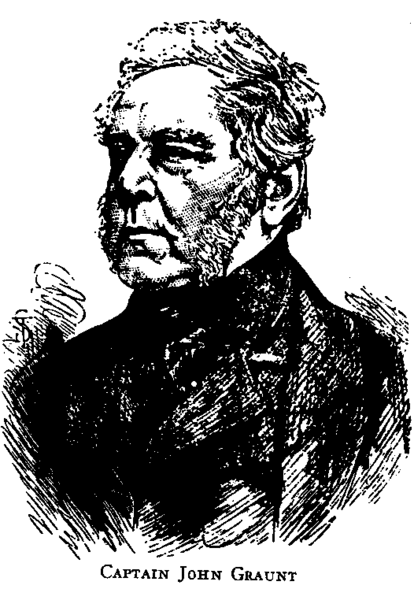<Back to Index>
- Demographer John Graunt, 1620
- Painter Lyubov Sergeyevna Popova, 1889
- Prince of Orange William I the Silent, 1533
PAGE SPONSOR

John Graunt (24 April 1620 – 18 April 1674) was one of the first demographers, though by profession he was a haberdasher. Born in London, Graunt, along with William Petty, developed early human statistical and census methods that later provided a framework for modern demography. He is credited with producing the first life table, giving probabilities of survival to each age. Graunt is also considered as one of the first experts in epidemiology, since his famous book was concerned mostly with public health statistics.
His book Natural and Political Observations Made upon the Bills of Mortality (1662) used analysis of the mortality rolls in early modern London as Charles II and other officials attempted to create a system to warn of the onset and spread of bubonic plague in the city. Though the system was never truly created, Graunt's work in studying the rolls resulted in the first statistically-based estimation of the population of London.
The erudition of the Observations led Graunt to the Royal Society, where he presented his work and was subsequently elected a fellow. Initially, members of the Royal Society wanted nothing to do with Graunt, uncomfortable with the idea of a haberdasher being elected. Fortunately for Graunt, Charles II, who was King Of England at the time, ignored their objections and brought Graunt into the society.
Upon entering into the Royal Society, Graunt decided to convert to Catholicism at a time when Catholics and Protestants were struggling for control of England and Europe. Due to his association with the religion, he was accused of taking part in the Great Fire of London and as a result was dismissed from his employment at a water company. With no financial support, Graunt lived the rest of his life in poverty, dying of jaundice and liver disease at the age of 53.